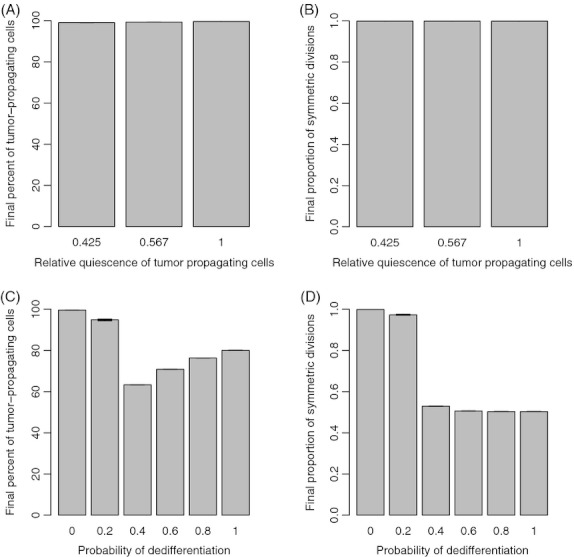Figure 3.

The effects of natural selection on tumor-propagating cells' proportion of symmetric divisions and the resulting tumor composition when tumor-propagating cells are quiescent and dedifferentiation can occur. The relative quiescence of tumor-propagating cells to transient cells resulted in the evolution of (A) high tumor-propagating cell levels and (B) high tumor-propagating cell symmetric division probabilities [n = (37,45,50) for relative quiescence = (0.425,0.567,1)]. (C) Under the possibility that transient cells can dedifferentiate at cell division, high levels of tumor-propagating cells are still found, although (D) tumor-propagating cells' symmetric division rates are unchanged if transient cells dedifferentiation is common (n = 48 when dedifferentiation is 0; n = 50 otherwise). Error bars show standard error of the mean, and 50 simulations were initialized per condition.
